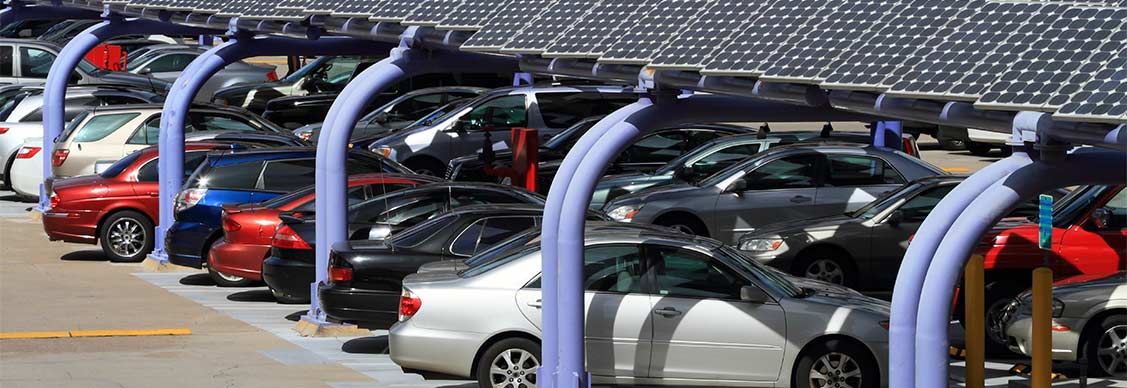Why on-site renewable energy solutions are in demand
More buildings are now installing their own green energy sources as companies look to minimise their carbon footprints
Solar panels are becoming an increasingly common sight on rooftops and car ports as more landlords and owner-occupiers get on board with the idea of onsite renewable energy.
From universities to retail outlets and corporate HQs, the variety of buildings boasting solar panels is growing. The Port of Hull recently unveiled the UK’s largest commercial rooftop solar system while Sussex University is aiming to be more energy efficient with more than 3,000 solar panels across 30 buildings on campus.
And big retailers like IKEA owner Ingka, which has installed 935,000 solar panels on the roofs of its warehouses and stores in recent years, have been joined by retail investors Hammerson and British Land, which have installed solar panels on shopping centres.
What’s more, fund managers and institutional investors are now including onsite provision as part of their wider green ambitions. Legal & General’s LGIM Real Assets Real Estate Net Zero Pathway, published in late 2020, includes onsite renewable provision as part of its construction refurbishment plans for the coming years.
“With renewable energy high on the agenda, investors are realising that onsite energy provision is a sound move – and it comes with the financial benefits of being self-sufficient,” says Bertie Readhead, director in JLL’s Energy & Infrastructure Advisory team. “There’s also a very valid reason to do so in terms of future-proofing buildings across investment or real estate portfolios.”
Falling costs drive uptake
While buying green energy via PPAs (power purchase agreements) is now a common route for those seeking to clean up energy supplies – and corporate PPA announcements in Europe alone broke records in 2020 - the falling cost of solar technology and installation is fueling interest in on-site renewable energy provision.
Despite recent cost increases due to rising prices of materials including polysilicon, solar energy is around 82 percent cheaper than a decade ago, according to the International Renewable Energy Agency.
“Rooftop solar that can primarily serve the underlying building with surplus energy exported to the grid, avoids network costs, minimises losses and is proving to be more financially viable today than just a few years ago,” Readhead says. “The key is in getting the balance of energy use right; how much energy does a landlord, tenant or owner occupier need, the agreed price or avoided cost of the energy – and, practically, can their roof accommodate panels?”
Aside from size, other practical issues exist, such as the viability of putting solar panels on a roof which itself may require replacing in a few years’ time.
“Current discussions with one institutional client centre around this very point,” says Readhead. “Is it better to wait to install solar panels, rather than being in a situation where the entire system needs to be temporarily removed to allow roofing work to go ahead?”
Another plus point is potentially turning excess energy into additional income.
While a larger solar array that generates more power than required allows energy to be sold to the grid, there may be the option of supplying green power to other parts of an investors’ own investment portfolio and supporting wider sustainability objectives.
“For occupiers too, getting renewable energy directly from the landlord is an attractive option, typically requiring direct PPA agreements on mutually beneficial terms,” adds Readhead.
Looking for more insights? Never miss an update.
The latest news, insights and opportunities from global commercial real estate markets straight to your inbox.
“Occupiers share similar green ambitions, so the putting in place of contractual agreements that help both sides is a win-win. But it’s something that we’re yet to see become mainstream.”
Securing green onsite energy supply could equally help existing buildings to compete for the best tenants.
“Occupiers will continue to seek the best and latest on offer in terms of renewable energy to help them meet their own sustainability commitments,” says Readhead.
Preparing for a greener future
While there are still some feasibility issues for landlords and their tenants to overcome, the focus on cutting carbon will only increase amid tightening regulation and growing peer pressure.
“Investors are aware that just a few years from now their buildings could be overshadowed by greener newbuilds that are more energy efficient or have cutting-edge technology - and this has clear implications for future property valuations,” says Readhead.
In the short-term, improvements in accurately forecasting the benefits achievable from commercial rooftop space will be needed.
“There are increasingly more sophisticated ways of assessing potential solar capacity, for example through specialist software using satelite imagery,” Readhead says. “That can help landlords cost effectively gain a more accurate picture of what’s possible and where.”
In the meantime, growing interest in and knowledge of the area is helping to drive progress. “Discussions are certainly more finessed now in terms of addressing those practical issues,” says Readhead. “The trajectory that both investors and occupiers are now on points towards greater collaboration on delivering onsite green energy supply and achieving wider sustainability goals.”
